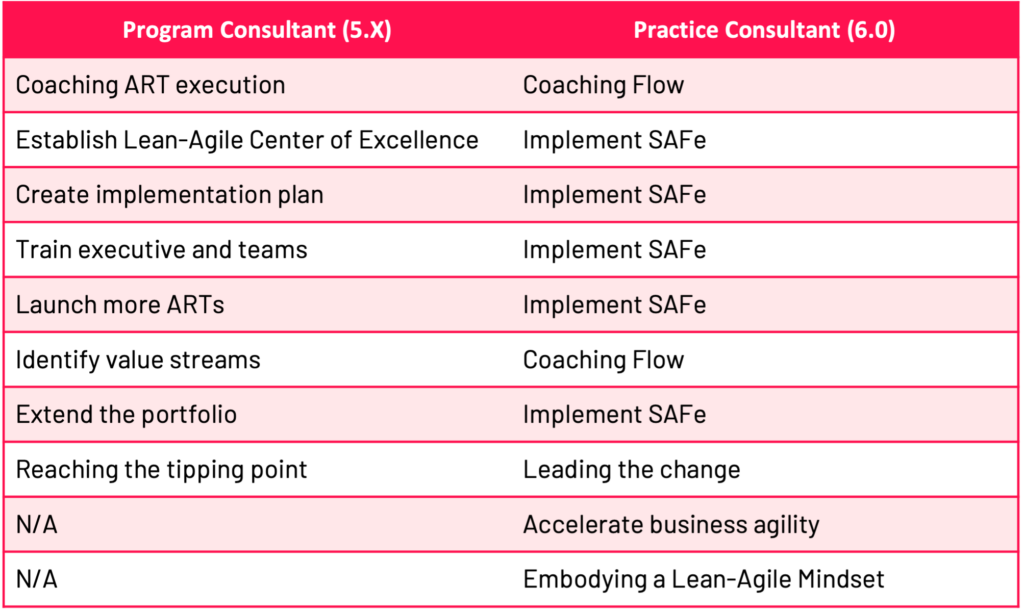In the first article in this series, we discussed three challenges standing in the way of Enterprise Agility:
- Lack of visibility
- Not being focused on value delivery
- Failing to train effectively
Assuming those challenges are being addressed, the next vital factor in the pursuit of Enterprise Agility is the formulation of an effective strategic plan.
Why planning is vital
“If you fail to plan, you’re planning to fail.”
That line is a cliche for a reason — it’s absolutely true and it applies to nearly every aspect of life. Looking at it from a business perspective, planning accomplishes some powerful things:
- Helps us clearly identify our goals
- Helps us understand the benefits of various potential actions
- Improves resource utilization so we can accomplish more
- Helps us understand the scope of effort required to reach an outcome
- Helps us identify the risks and roadblocks that may stand in our way
When organizations are pursuing Enterprise Agility, there are some specific aspects of planning that support that effort:
- A vision to plan against
- The scope of time in which parts of that vision must be executed
- A practical sense of how much work can be delivered in that amount of time
- A backlog of work items to be delivered in that time block
- The ability to prioritize those items so the most valuable items are completed first
- A buffer to allow for inevitable change
In some cases, organizations develop annual or quarterly plans without including some or all of these important facets. The resulting plan will certainly not support agility, and may not even support success.
How data drives “pivot or persevere” decision making
As a plan is developed, there are two basic ways to go about it:
- Hope and pray
- Base it on the data
The preferable method should come as no surprise. But it’s surprising how many companies choose door number one in a practical sense.
It doesn’t work to set up strategic plans based solely on what you wish you could accomplish in a year or a quarter. Rather, solid strategic plans that are going to guide value delivery and business success must be based realistically on historical data. Then, as you work the plan, real-time data should inform ongoing decision making to ensure you’re always heading in the right direction.
Data collection and radiation is a problem in most organizations
The classic data formats found in large organizations include:
- Spreadsheets
- Presentations
- Shared drives
All of these formats share some important weaknesses that can get in the way of effective data radiation:
- Human error (data entry, formula creation, inaccurate curation)
- Time delay (by the time the data is presented to decision makers, it’s already out of date)
- Confusion (version control issues, mixed formats, erroneous distribution)
When you add to these issues the fact that the modern organization relies on dozens of different apps and systems to collect the data they need, the situation compounds.
Tool consolidation supports rapid value-based decision making
When data is coming from these imperfect, disparate sources, it becomes very difficult to make effective decisions in a timely manner. Inevitably, the time it takes to properly collect, parse, analyze, and present the data renders it too old to effectively support decision making in a fast-moving environment that demands business agility.
Consolidating and integrating those tools that supply real-time data is absolutely essential for an organization to achieve Enterprise Agility and achieve what’s been laid out in their strategic plans.
Jira Align has proven to be an excellent tool custom-designed for that job.
Proper planning breeds predictable value delivery
When an appropriate vision has been established (we know what value we’re delivering and why) and data has shown roughly how many increments it has historically taken to deliver that value, you can achieve predictability.
Importantly, that doesn’t mean being able to perfectly predict productivity so that the teams turn into a factory. Change will still be constant and agility involves the ability to quickly and effectively respond to that change. But predictability does support robust planning within the context of an Agile workflow — at any juncture, the team knows roughly how much it can accomplish within a planning increment. And so, they can confidently commit to a volume of work and leadership can confidently expect that work to be completed.
Most importantly, predictability supports value delivery because knowing how much work can be done in a given period of time makes it possible to effectively balance prioritization and resource allocation. Every available resource will be working on the most valuable tasks throughout the entire increment.
If you’d like to learn more about value-based planning and Enterprise Agility — including how a framework and tooling can help — watch our webinar-on-demand, “Enterprise Agility with Jira Align: Planning for Value.”
Also, don’t miss the third and final article in this series, Work the Plan: Enterprise Agility With Jira Align.











 Next, we see a change regarding the frequency of the daily team meeting, formerly known as the Daily Stand-up. Instead of mandating a daily occurrence, 6.0 provides a more general recommendation of “about daily”, which means the teams may choose to NOT meet daily. While this may provide more freedom for teams to decide how often they wish to revisit their plan towards sprint/iteration goals, I am concerned that some teams will use this wording to justify a weekly meeting, which would follow a more traditional status meeting mentality. I believe teams should remain vigilant and have the discipline to meet daily until they have reached a state of maturity and understanding of how to collaborate effectively within the Agile/SAFe paradigm.
Next, we see a change regarding the frequency of the daily team meeting, formerly known as the Daily Stand-up. Instead of mandating a daily occurrence, 6.0 provides a more general recommendation of “about daily”, which means the teams may choose to NOT meet daily. While this may provide more freedom for teams to decide how often they wish to revisit their plan towards sprint/iteration goals, I am concerned that some teams will use this wording to justify a weekly meeting, which would follow a more traditional status meeting mentality. I believe teams should remain vigilant and have the discipline to meet daily until they have reached a state of maturity and understanding of how to collaborate effectively within the Agile/SAFe paradigm.
 If you are still reading, chances are you’re an SPC yourself, or you already have SPCs within your organization who are doing great work. Also, there’s a high probability that your SPCs are trying to understand how this change will affect them.
If you are still reading, chances are you’re an SPC yourself, or you already have SPCs within your organization who are doing great work. Also, there’s a high probability that your SPCs are trying to understand how this change will affect them. When does a relatively obscure coding language become important to the C-suite of an international, multi-billion dollar enterprise?
When does a relatively obscure coding language become important to the C-suite of an international, multi-billion dollar enterprise? Within the
Within the  One common aftermath of comparing team productivity using the Story Point measure alone is that someone in a leadership role will often mandate an increase in team productivity by directing or requiring a percent increase in output; for example, “Team A must complete 10% more points each sprint.” This will often cause unintended behavior such as teams artificially inflating their estimates just to achieve the directed goal; a PBI that used to be five points is now eight points, etc. This type of behavior puts the focus on meaningless increases in the Velocity metric, eliminating its value.
One common aftermath of comparing team productivity using the Story Point measure alone is that someone in a leadership role will often mandate an increase in team productivity by directing or requiring a percent increase in output; for example, “Team A must complete 10% more points each sprint.” This will often cause unintended behavior such as teams artificially inflating their estimates just to achieve the directed goal; a PBI that used to be five points is now eight points, etc. This type of behavior puts the focus on meaningless increases in the Velocity metric, eliminating its value. DevOps is all about fast delivery of quality code that adds value for the customer. It relies heavily on automation and the application of Agile principles to streamline the entire software development life cycle.
DevOps is all about fast delivery of quality code that adds value for the customer. It relies heavily on automation and the application of Agile principles to streamline the entire software development life cycle. Back in 2020, Gartner’s whitepaper
Back in 2020, Gartner’s whitepaper 
 Before we explore options to manage unplanned work using SAFe, it’s important to first clarify what “unplanned work” means.
Before we explore options to manage unplanned work using SAFe, it’s important to first clarify what “unplanned work” means. When might be the right intervals to take snapshots? As I mentioned previously, SAFe does not provide any guidance on this, but one approach that I have observed to be effective is to take a measurement at PI boundaries (at minimum) in order to evaluate how much change has occurred within the backlog. This will enable you to determine how many new requirements/epics have been introduced within that period of time.
When might be the right intervals to take snapshots? As I mentioned previously, SAFe does not provide any guidance on this, but one approach that I have observed to be effective is to take a measurement at PI boundaries (at minimum) in order to evaluate how much change has occurred within the backlog. This will enable you to determine how many new requirements/epics have been introduced within that period of time. Third, the Scrum master role must be seen as an opportunity to advance one’s career by
Third, the Scrum master role must be seen as an opportunity to advance one’s career by